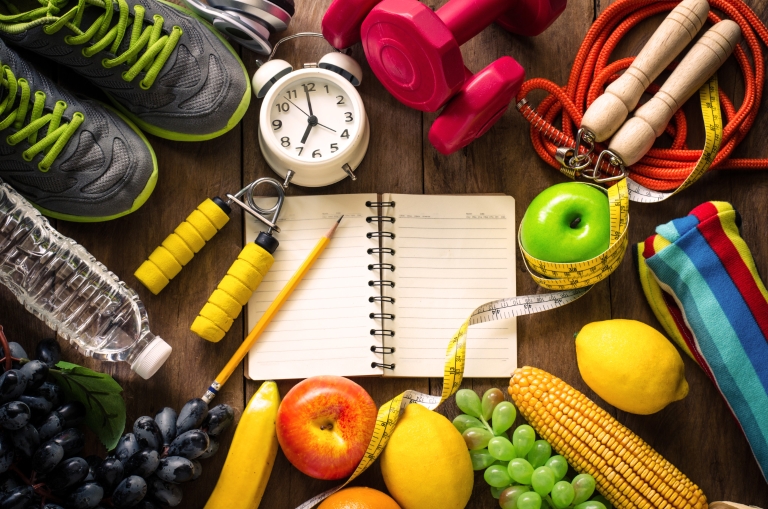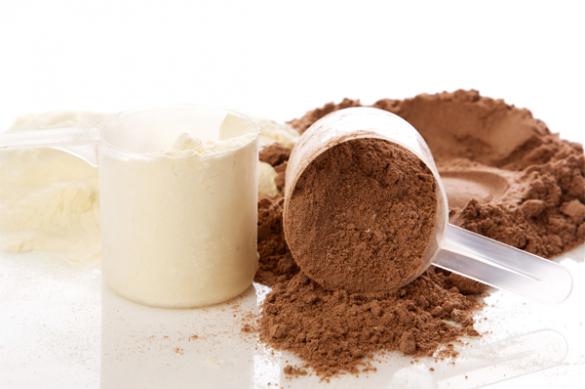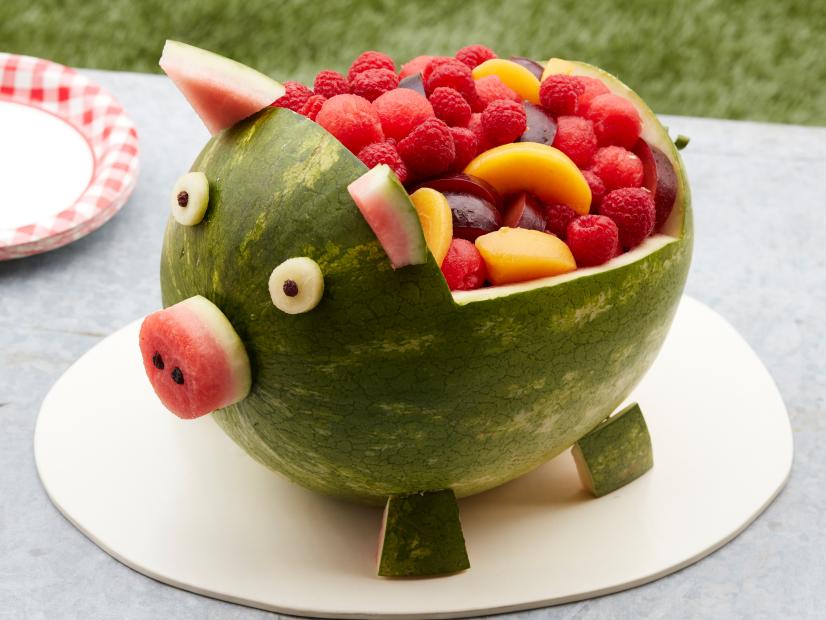
In this article you will learn:
- Fat loss diet from a completely new perspective – which finally provides all the answers
- What is really important in an effective & sustainable fat loss diet – and what many get wrong
- Counting calories was yesterday – How the saturation principle changes EVERYTHING
- How and which domino foods spoil your diet
- Step by step measures that can be implemented IMMEDIATELY and start burning fat
- Effective fat burning at a glance – A compact summary of all important key principles and measures for printing
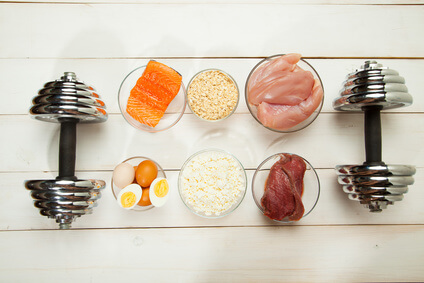
You have probably read and heard a lot about fat loss diets. But let me guess: It was never the whole truth.
Everyone supposedly knows something to say about it, many contradict each other. That doesn’t necessarily make it easier for you.
I know a lot of people are desperate about their diet because they hear different things every day. One day fruit is a healthy source of energy, the next day it is secretly fattening up.
The desire to eat quickly disappears, which is why many pull the emergency brake and get out. Problematic, however, is that eating right is critical to burning body fat. It doesn’t work with training alone.
Fortunately, it’s not all that complicated as it’s done. Let’s clean up the field from behind and put an end to the guesswork. If you want to lose weight quickly and sustainably with the right diet, then this article is for you.
In the following lines I will outline for you exactly what is important. You will find that there is finally a closed model of the proper fat loss diet.
What we are discussing here is elementary understanding that probably nobody has been able to fully explain to you before. There are always fundamental questions left, right? But by the end of the article, you will understand that diets are just vessels.
What really matters are the principles. You have to understand fat loss diets instead of poking into individual foods and unimportant details. Much will be simplified where there used to be frustration and confusion.
The article is divided into three chapters so that you can refer to what you need again later:
- Chapter I: The Basics of the Effective AND Sustainable Fat Loss Diet – The Power of the Saturation Principle
- Chapter II: The catalog of measures – These steps set your diet to ‘slim’
- Chapter III: The key principles at a glance – Basic understanding that will change your diet forever, summarized
The content of this chapter forms our basis. Here you will find out what it takes to ensure that your diet burns body fat both effectively and sustainably.
I am not going to bombard you with nutrition theory, but rather explain the essence of a proper fat loss diet to you in a very understandable way.
It is a superordinate perspective that changes a lot and also makes it superfluous. By the end of this chapter you will have lost some of the nutritional ballast in favor of less essential key principles.
Well then, let’s start with an elementary insight before it gets really exciting.

The non-negotiable condition for losing weight
I think you won’t be surprised. We should still hold onto it:
To burn body fat, you need a calorie deficit.
That means you should consume less energy during the day than you burn. This relatively simple model has proven itself time and time again to be practicable and sufficiently precise to be able to base our fat burning diet on it.
The idea behind it is of course: Your body is only “motivated” to tap its reserves if you are supplying less energy than needed.
That is understandable and at least on this point all serious dietary recommendations for weight loss agree.
But now comes the exciting part, where the wheat is separated from the chaff:
How is the best way to ensure a calorie deficit in order to effectively and sustainably burn body fat?
Dietary change – that’s what counts
First of all: Do you even need to change your diet? Many prefer to just work out and want to lose weight.
That can work. But it usually doesn’t do it if you don’t eat consciously.
This is because exercising makes you hungrier . Those who do not have proper control over their eating habits will now resort to junk food more often and end up without a calorie deficit again.
Then no matter how hard you work in the studio, you won’t burn any body fat.
Logically, someone who is (also) diet-related overweight cannot avoid changing their diet. It’s a hard fact to face.
Okay, we get it, we have to control our diet and adjust our diet to lose weight. A popular approach here: just eat less.
Eat half should be very effective, they say. But only true in exceptional cases.
The reality is that a drastic reduction in calories usually has no sustainability, but leads to the yo-yo effect. In the long run, there is more body fat on it than was lost for a short time.
This is because our body is an adaptation machine. He adapts to the circumstances.
If we reduce the calories too drastically, our body will fight against it. We are confronted with demotivation, exhaustion and cravings until we give in and increase the calorie intake again.
Everyone who has tried a crash diet is familiar with this. But the insight behind it is far more comprehensive than you might now imagine.
In fact, from this perspective, many nutritional approaches turn out to be nonsensical.
Arithmetic games – why only fools count calories
For a long time, some experts were of the opinion that a calorie is a calorie.
It is therefore unimportant where the calories come from. Only the sum would be decisive.
It is therefore sufficient to determine the approximate calorie requirement and subtract a few hundred calories – the diet is ready.
On this basis, the method of counting calories has established itself.
Some people go to great lengths to do this, weigh all foods and calculate the total calories.
What, today I still have 300 calories free? Well, in with the Snickers!
Would be nice if it were that easy. But it is not. Meanwhile enough studies have shown that a calorie is not a calorie.
Let me show you a crucial flaw in the mentioned model: It completely neglects the effects on the metabolism.
The consequence of this mistake is that many seriously believe that they can lose weight with pizza, kebab, and beer, as long as they stay below their daily calorie requirement.
Let me be clear once and for all: This is wrong!

At least if we think further than 12 noon and look at the long-term development.
Yes, you can temporarily burn body fat this way. The only problem is, your body will quickly bring you to your knees. The cravings are unbearable.
This method is not sustainable because it completely neglects the most important factor, the so-called domino foods (more on this in a moment).
As has been shown time and time again, it’s not just a numbers game. In a successful fat loss diet, emotions must ALWAYS be included. This means that we have to consider the effects on our metabolism with every food.
What pizza and the like do with your metabolism is this:
- They contain lots of simple carbohydrates that make your blood sugar rise quickly.
- This is followed by a strong release of insulin. The blood sugar level drops very quickly.
- To put it bluntly, the brain panics because, as all diabetics know, too low a blood sugar level is dangerous.
- Consequently, new food is required so that the level rises again.
This is called a ravenous roller coaster and you can easily see that in this way you will ultimately eat more than you need.
For a while you may be able to be disciplined enough to meet your calorie deficit. Sooner or later, however, EVERYONE kinks in here. Everyone thinks they are the exception, but nobody is the exception.
It is psychologically exhausting, in the truest sense of the word grueling and all willpower is used up at some point. It has been shown time and again that this path can only fail.
Counting calories by itself may work if the right foods are consumed in the process. But, as you will see in a moment, it is unnecessarily complex and therefore not very sustainable.
There is a better, more powerful principle that I would now like to introduce to you.
The principle of satiety – the essence of the fat loss diet
We have to admit that it is by no means irrelevant which sources your calories come from. Let’s therefore formulate in more detail what is important in nutrition if we want to lose weight effectively AND sustainably:
Fat loss diet means creating a calorie deficit in such a way that you can keep it as long as possible (so you feel good about yourself).
A smart change in diet is therefore first and foremost based on restoring the natural balance between hunger and satiety , i.e. not eating more “by itself” than we need.
This in turn means that we are removing and replacing the domino foods already mentioned.
Domino foods are those products that ensure that you later eat significantly more than you need to. That makes you hungrier for the day instead of filling you sensibly and sustainably.
This basically includes everything that has a high calorie density but only a low nutrient density.
Sweets, for example, contain a lot of sugar and fat, but at most fill you up for a short time, send blood sugar on a roller coaster ride and cause cravings.
Let’s compare that to natural meat like chicken breast, turkey, pork tenderloin. Here we have a low calorie density, but a high degree of satiety because of the high protein content and because you simply have to chew a lot. The same applies to vegetables and fish.
This comparison shows what we have to do:
A good diet for weight loss is increasingly eliminating domino foods and replacing them with products that are as filling as possible.
This is the principle of satiety, the essence of our fat loss diet. The principle of satiety makes the fat loss diet equally effective and sustainable. It is also good for your health.
Tempting diets that allow you all sorts of junk food, provided you stay in a calorie deficit, are finally off the table, because they simply don’t work sustainably.
I’m serious. You have to say goodbye to the idea that you can continue to eat all that delicious junk food daily and just watch your calorie intake .
This is wishful thinking and everyone who propagates such a diet (e.g. seen more often on YouTube) is not a nutritionist, but a marketing expert.
They specifically address your desires in order to benefit from them yourself. It never worked and never will.
Identify domino foods
Of course that doesn’t mean that you can’t indulge yourself anymore. You can have an ice cream with your family on Sunday. You can also grab pizza and beer for birthdays if you like – without a guilty conscience.
But none of this daily if you want to lose weight. You have to stick to exceptions, otherwise you endanger your success.
When changing your diet, it is helpful to classify the foods according to their calorie saturation coefficient.
- Red foods are domino foods. They make you hungry and sabotage any attempt to lose weight.
- Yellow foods are basically perfectly fine, but can still add up to a calorie increase more quickly. In other words: They can be on the menu without any problems, but also offer savings potential if you want to reduce calories further.
- Green foods have a good ratio of calories and satiety and are therefore harmless when losing weight. However, it also depends on the quality (more on that in a moment).
Red foods:
- Chocolate
- Ice cream
- Donuts
- Cake
- Cookies
- Gummy bears
- Chips
- Fruit yoghurts
- Kellogs
- Energy bar
- Pizza
- Burger
- French fries
- Doner kebab
- Hot Dog
Yellow foods:
- Potatoes
- rice
- Noodles
- Oatmeal
- nuts
- seeds
- kernels
- Oils / Butter
These lists themselves are, of course, excerpts and it is important that the principles of healthy eating are strictly adhered to. They apply regardless of aesthetic objectives.
In particular, choosing products that are as natural as possible is crucial here. Meat, for example, can be very heavily processed and breaded with calorie ballast, which would move it from the green to the red foods in a direct way.
Nevertheless, with these lists based on the saturation principle, you now have a good overview of the importance of the individual products when losing weight and which screws you can turn to achieve your goal successfully.
Let me now show you how comprehensive this seemingly simple principle really is and what it simplifies everything for you.
Low Carb or Low Fat? The right nutrients
I’m sure you’re wondering why I haven’t talked more specifically about individual nutrients. The answer is simple: it is not necessary! In fact, as I will show below, we have already integrated everything that is necessary.
This is the advantage if you can approach the matter from a higher-level perspective – you get rid of a lot of ballast.
There is a trend to make certain macronutrients bad. With some it’s the fat, with others it’s the carbohydrates that make you fat.
The truth? Neither carbohydrates nor fats are fattening per se.

To the carbohydrates
It is true that certain “simple” carbohydrates are a cause of obesity. It is primarily about sugar and white flour products.
But we already have this aspect completely covered with the grocery lists above. You will find the “worst carbs” are in the red list.
But there is no reason to demonize carbohydrates per se. Complex carbs in particular are an energy source that the body can use well, nothing more.
The saturation principle enables us to sensibly separate both groups of carbohydrates – as already done above.
To the fats
It is also true that certain fats are harmful to health. This is particularly about the so-called industrial trans fats.
They arise during certain manufacturing processes and can only be found in foods on the red list. The key here is the principle of naturalness – it ensures that only healthy fats are served.
Because otherwise fats are vital and irreplaceable in order to be healthy, efficient and slim. For example, some vitamins can only be dissolved and used by the body through fat and the brain cannot function without them (one reason why omega-3 fatty acids are so important).
Fats are a source of energy, flavor carriers and vital. They only make you fat when we eat too much – which brings us back to the principle of satiety.
You can see, we’ve already covered that too.
What about proteins?
The green list includes many protein-rich foods. Because protein, like vegetables, is very filling. It is consequently an important nutrient in losing weight. The aspect was also integrated by the saturation principle.
If you want to find out more about proteins, you can read here: Protein Guide.
The subtle difference
You can see that the topic of ‘nutrients’ is always viewed in a far too complicated way because the general understanding is missing.
In the end, we resolve the entire issue if we observe the principle of saturation and at the same time are quite simply reasonable.
For example, I haven’t discussed how meals should be put together because that’s just a theoretical question. In practice, everyone can intuitively solve this correctly.
You know that products on the green list are particularly valuable when it comes to weight loss. This means your meals should primarily consist of it.
In practice this means: cook fish with vegetables. You can easily serve potatoes and make a sauce with it. But both are on the yellow list, so just a little less of it.
It really is that simple! It’s about realizing and finally admitting that nutrition is not an exact science.
It actually works best when you approach it with that kind of plain common sense. It has only become so complicated that many now seriously believe that they cannot lose weight without scientifically precise measures.
The time has come to ask the question that is probably on the tip of the tongue for many: How do you know that you are in a calorie deficit? Answer: It happens automatically when you consume the right foods!
Because diet-related obesity does arise when we eat too much of the “right” foods but too much of the “wrong” ones.
That is crucial! This chapter has demonstrated how powerful and comprehensive the saturation principle really is.
It’s a completely different nutritional perspective, I am aware of that. I know that some may initially resist it.
But success will remove the doubts. Implement the following catalog of measures and you will achieve the breakthrough to a slim body.
You want to get started and change your diet so that you get rid of your excess body fat as quickly as possible? You now know what is important. Now let’s look at the specific measures to ignite the fat burning.

The step by step instructions: The right diet for weight loss
The first thing we should do is change our diet.
Five steps to making sure you’re eating the right foods to slim down, and sticking to them. The more consistent you are here, the better your progress will be – externally as well as internally.
After a week you will feel lighter, more energetic, even if you haven’t burned a lot of body fat. That gives an additional motivation boost.
Step # 1: Build a feedback system
If you want to lose weight, you should track your progress. This not only motivates, but also gives you valuable feedback in case you should ‘get lost’.
Therefore it is important to take a compact, meaningful snapshot so that you can compare it later:
- Take a photo. Strange and fascinating how your own gaze in the mirror can be distorted. The mirror can lie, a picture reveals the truth. Therefore, record your current state in a photo. This often gives a wow factor later on: ‘What, that was really me ?!’ Your progress may astound you!
- Make a note of your body measurements. The most honest and meaningful data set can be obtained with a simple measuring tape. I use this model.
Measure the circumference of your arms, shoulders, chest, legs and especially the hips. The latter is particularly important: If the hip circumference is reduced, this is a sure sign of fat burning. If the other circumferences show isolated increases, this means that you have built up muscles at the same time. Sometimes the scales don’t show any difference, even though your body composition has changed fundamentally! - (optional) Write down your body weight. As I said, a scale can lie. It does not provide any reliable information about your body composition (not even the body analyzer scale!). If it shows weight loss, it doesn’t necessarily have to be fat. It can also be muscles and simply water. Nevertheless, it is of course very interesting to know how your own body weight changes over time.
Step # 2: Identify domino foods, remove them from the daily menu and replace them correctly.
Now let’s get down to business. Keep an eye out for domino foods (use the above list) in your nutritional everyday and delete them completely. They should not have a permanent place in your life.
Of course, it would be wrong to cut calories in an uncontrolled manner. This often leads to the calorie deficit becoming too large. As already indicated, it is important to replace the empty calories with nutritious foods (especially the green list).
This is what ultimately creates a healthy nutritional balance that gives you energy and burns excess body fat.
Smart replacement of domino foods is the way to sustainably lose weight in the right places and to make the body healthy.
Step # 3: Build a control system
Are you ready to cut out all kinds of sweets and junk food permanently? Really forever? If you’re like 99.9% of the people out there: Hardly.
Neither do I. Fortunately, it’s not necessary at all. We “just” have to make sure that exceptions remain exceptions.
If you rely solely on your intuition, you will fail.
Because it was shaped by many years and decades of ‘compulsory desserts‘ and ‘chocolates for television’. So, for once, she is not a good advisor.
But there is a simple solution: Make a concise note of what you eat. Every day.
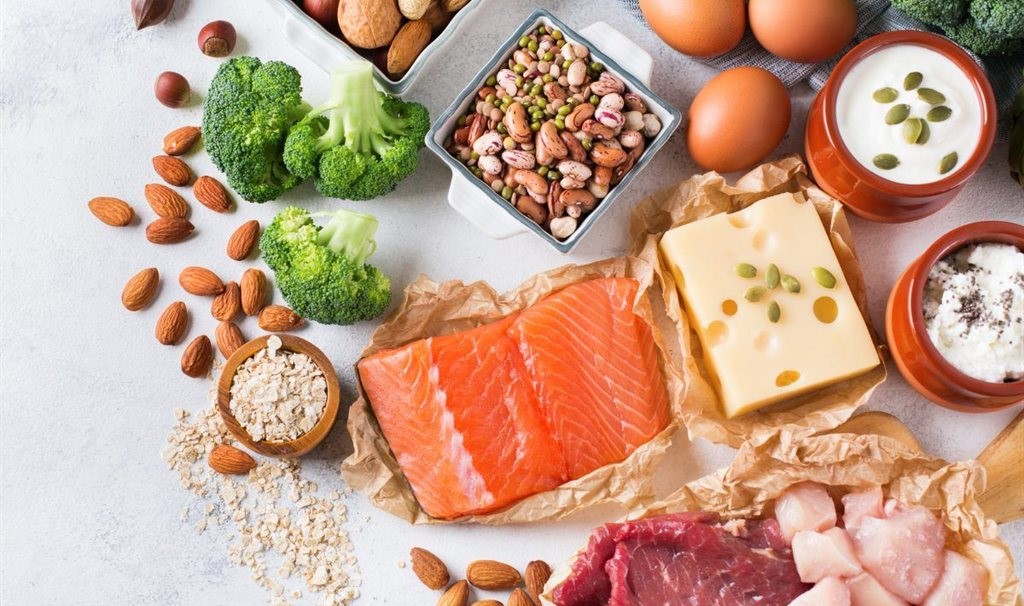
You don’t need to calculate calories or weigh quantities. It’s just a matter of listing the food – a rough estimate of the amount is enough.
Often that alone ensures that we eat more consciously and become leaner. That’s why I like to refer to this step as the easiest diet of all time.
With this simple data set, you will quickly recognize from now on when you let your diet drag and domino foods creep back into your everyday life.
Simple and effective.
Step # 4: be patient
We always want everything immediately. Preferably without any effort. Of course, it would be great to wake up in the morning with a sixpack instead of a bath. But it does not correspond to the biological facts.
Fat has to oxidize. So it needs oxygen. The fact is: You can’t breathe as much as many would like to burn body fat every day.
I experience all too often how someone who has been sneaking on his bacon coat over the years wants to get rid of it in 4 weeks.
The problem is that in such a case, reality will demotivate you. You cannot correct in a few weeks what you have neglected over many years. The attempt on its own turns into the opposite.
I’m not saying that rapid fat burning ‘is a myth.
With the right nutritional strategy as presented here, a balanced lifestyle and effective fat burning training, you can achieve excellent results.
But you still have to give yourself time ! Several months. As a rule of thumb, half a kilogram of body fat per week can be burned sustainably.
Rules of thumb also differ, of course. Someone who is very overweight will initially be able to break down fat significantly faster because the body ‘wants’ that.
The leaner you get, the slower your fat burning will be. “The last kilos” are the toughest. So you only have one thing left to not screw it up: patience.
Be patient with yourself and your body. It’s a virtue.
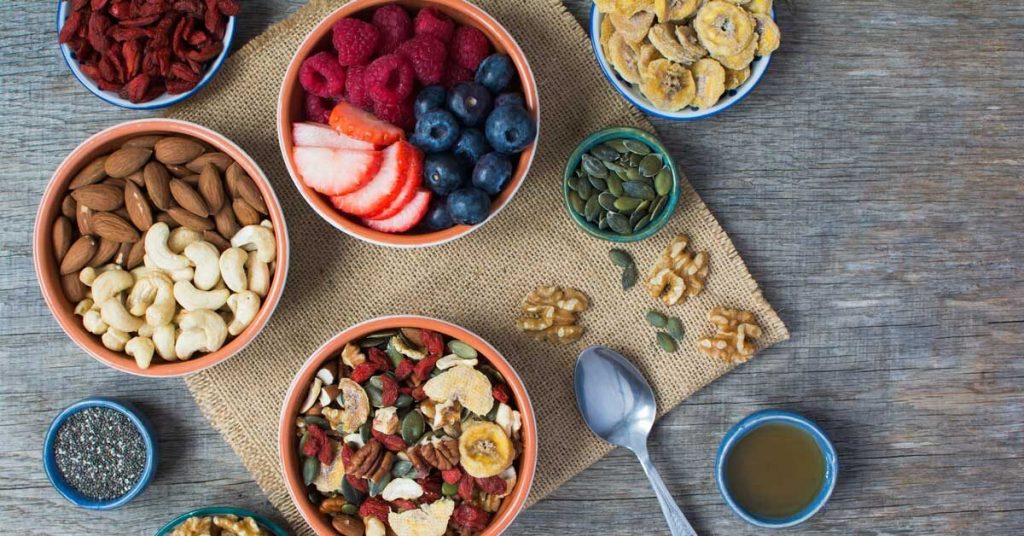
Step # 5: Readjust if necessary
You have your feedback system, you have your control system. So you can tell when fat burning is stalling. This enables you to take corrective steps early:
- First, check whether you still have some catching up to do in step 2. We are human and it is natural that we let some things slide over time. Everyone is like that.
- If not, consider factors other than diet first. Are you getting enough exercise? Of course you can “only” lose weight with diet, but it is much more difficult. With additional training and, above all, an active lifestyle, it is much easier to create a healthy calorie deficit and keep it for a long time. In addition, stress is a key element in losing weight . If the stress gets out of hand, the calorie intake will also be increased unconsciously. Recovery is the key.
- The last option: “Help” yourself with the yellow foods. Replace some of them with green foods to reduce your calorie intake.
HOW we eat – the forgotten key factor
So far, we’ve only talked about WHAT you want to eat to effectively burn body fat.
However, HOW you eat is just as important. This factor is very often underestimated and usually not even mentioned. It is the second main cause of diet-related obesity.
You already know what basically causes obesity: a lack of satiety leads to more calories being consumed than necessary.
On the one hand this happens through domino foods, on the other hand also through poor eating habits.
This primarily includes:
- Distraction. Lots of food in front of the television or computer. Studies show that any form of distraction consumes more calories than focusing on the taste and texture of the meal. It is likely that the saturation signals are not correctly perceived due to the distraction. Interestingly, even AFTER the meal, even more calories are absorbed through snacks if one was distracted at the meal.
- Sling. Studies have also shown that eating quickly is linked to obesity. The reason for this is probably also that one is less sensitive to the saturation signals of the body and that one perceives them late when the food is swallowed.
The solution is simple:
Eat slowly and without distraction, preferably at a separate dining table.
Turn off your phone, turn off your TV and computer, and concentrate on your meal.
I also know from my own experience that this step is often difficult. Especially when the food tastes good. Many people therefore believe that it will work somehow if you only eat the right foods.
But don’t let that fool you, that’s wishful thinking too. The way we eat is just as important as the food itself.
In case you need a little motivational aid: It not only affects your body fat, but also your energy level. Many feel tired, demotivated and limp after the main meals.
This has exactly the same cause – the meal was simply too big because the satiety signals were felt too late or too many domino foods were eaten.
A particularly large meal puts our body into sleep mode so that it can concentrate its energy on digestion. Thus you experience an energy low.
Prevent this by not only choosing the right foods, but also by eating right.
How often should I eat if I want to lose weight?
Finally, a word about meal frequency. I am often asked how many meals are now “right”.
The somewhat idealized answer is very simple: Eat ’when you are hungry.
This is of course not that easy because you can’t always eat in everyday life. But on days off, and those who eat natural foods and eat slowly, concentrated, can trust the hunger signals of their body.
For me, the traditional scheme was set naturally at an early stage: Three main meals – morning, noon and evening.
This has proven itself, for a long time ensured that the body had an adequate supply of nutrients and was sufficient to keep you from having to snack all the time.
With additional training experience and frequency, I added 1-2 more snacks in between meals, following the body’s natural feelings of hunger and satiety. Usually consisting of a little vegetables, protein (e.g. skyr, eggs, shake) and fruit.
The right frequency simply comes about by itself, because the body then reports when it needs something. If you eat properly, i.e. implement the above steps, then these signals follow the natural need and are therefore trustworthy.
You see, the principles behind an effective fat loss diet aren’t that complicated after all. I’ve explained them in detail, but ultimately it’s just a few key principles that should really stick.
This chapter summarizes everything essential for you in a nutshell. I would even recommend that you print out this part (click here) and refer to it again and again until the key principles have become flesh and blood and shape your eating behavior at the level of the subconscious. That makes it easier to implement them consistently.

The key principles of proper fat loss diet
What it’s about: To create a calorie deficit and keep it as long as possible. This means that you should feel good doing it (apart from the short-term withdrawal of sugar and flavor enhancers …) and not fight against your body, as it does among other things. would be the case with crash diets.
How to do it: Enjoy the food slowly, consciously and without distraction. Find and replace domino foods. Actually, you just have to listen to your common sense, because you already know what is more likely to harm your body. But until now you were probably not fully aware of the extent (the domino effect).
What will help you: Feedback and control systems as described above. You can of course adjust them to your taste. Actually, it’s all about controlling yourself and the year-long craving for junk food and recording your progress.
What you have to admit to yourself:
- It’s going to be simple but tough.
- There are no shortcuts and no ways to stay in your comfort zone. Look for it and you will run in the wrong direction. It starts with compromise and ends with surrender.
- You will have to give up old habits and come to terms with the fact that food should primarily meet the needs of the body (without overloading it with ballast such as chemicals) and is only occasionally suitable as a stimulant. Otherwise you will gradually get sick and weak. As for enjoyment, the more often you succumb to it, the more you become dulled. The chocolate is no longer as satisfying if you eat it every day.
- You have to learn to cook and then do it regularly – either daily or in advance.
- You have to learn to ignore the excuses that your weaker self keeps serving you. Classic example: “I don’t have time to cook all the time.” The truth: you don’t feel like it. Nobody has time. We take them for the things that are important to us or that are fun. You may not enjoy cooking (yet). Then you just have to correctly measure its importance and realize that there is no alternative if you want to live healthy and get slim. Are you also so healthy without cooking often? Yet. Your body cannot compensate forever. Disillusion yourself and admit hard truths against all odds. That is the hardest part of the way.
Finally, what I already indicated in step # 5 applies: Diet is only one factor in a complex system. A heavier one, but we achieve the greatest effect when the body is viewed and developed as a whole. This creates synergy effects.
What does that mean? To put it simply: Go train. Rest and switch off. Move. Eat well.
The interplay of these factors determines the composition of your body and they are all closely related. If you are chronically overstressed, your diet will also be unbalanced. If you eat poorly, you have no energy to exercise and move. If you do not move enough, you become more susceptible to stress and it is more difficult to reduce it. A vicious cycle that makes more than half of our population overweight.

 Muscle Gain Or Fat Loss – Which Comes First?
Muscle Gain Or Fat Loss – Which Comes First?  Phenomenon ‘Mental Codes’ – You have to know this secret fitness mechanism
Phenomenon ‘Mental Codes’ – You have to know this secret fitness mechanism  Training with your own body weight: How to get in top form without a gym
Training with your own body weight: How to get in top form without a gym  Daily Discipline – Stop Chasing After And Do What Needs To Be Done!
Daily Discipline – Stop Chasing After And Do What Needs To Be Done! 